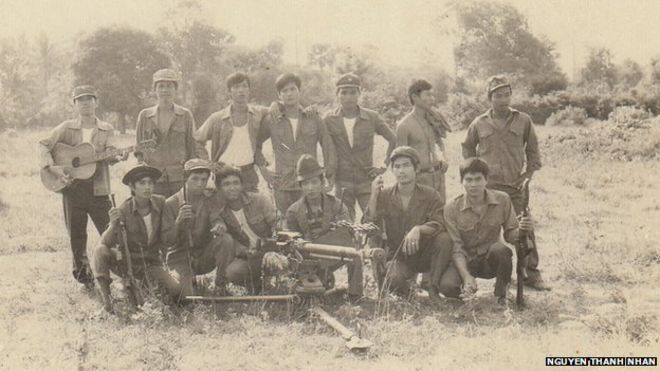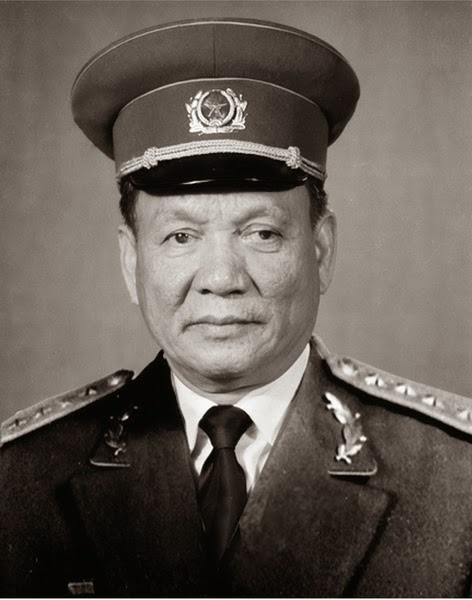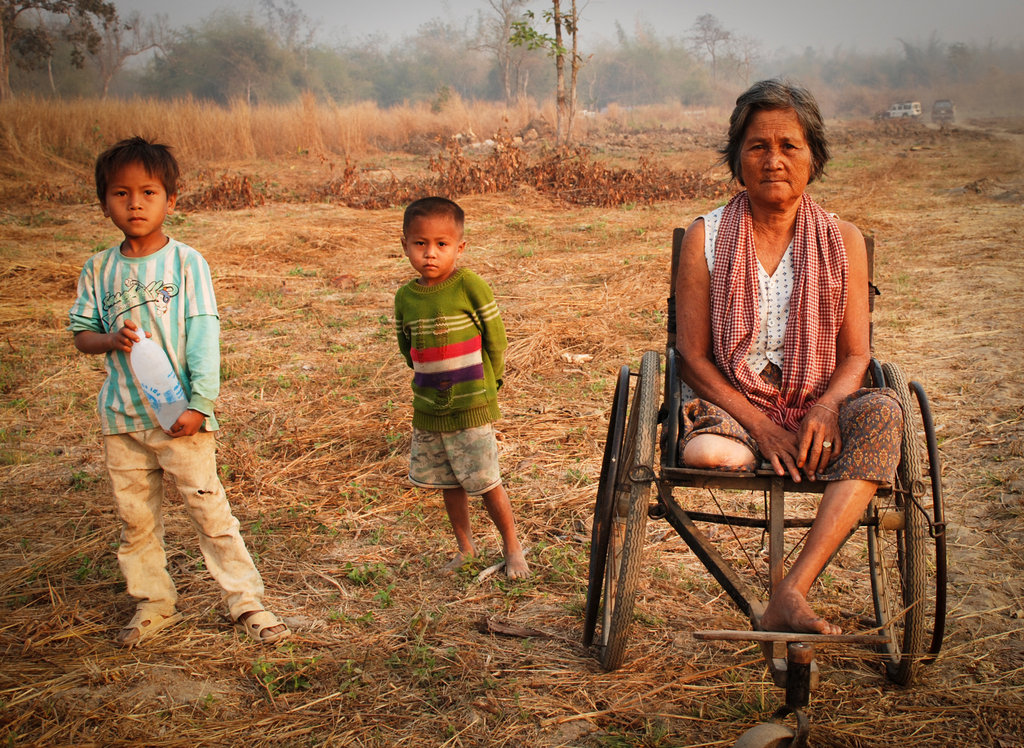As the 1980’s dawned, the cold war was pouring down heat across the globe. Soviet troops were fighting an unwinnable war in Afghanistan, Russian backed Vietnam had sent troops to support what was seen by the west as an occupying force propping up a puppet regime in Cambodia. China briefly invaded northern Vietnam in response. Reaganism and the anti-communist agenda began to renew confidence in a US military still reeling from the loss of almost 60,000 personnel from the Indo-China conflict. Dollar diplomacy saw covert funds flowing to militias in South America, as East and West faced each other off across the central European plains and vicious bush wars of ideologies raged in sub-Saharan Africa.
As the world engaged in bloody proxy conflicts, on 19th July 1984, in western Cambodia, an ambitious and arguably impossible plan was set into motion, the repercussions of which are still being felt over three decades later. This was to be known as the K5 plan, sometimes referred to as the bamboo curtain.
Holding Victory
The swift retreat of Pol Pot’s Khmer Rouge forces had allowed Vietnamese troops and Cambodian allies to take control over much of the country. Despite this apparent victory by the new Hanoi backed administration, the newly declared People’s Republic of Kampuchea (PRK) faced a daunting threat from the mountainous jungles along the western border with Thailand. It was in this inhospitable terrain that the Khmer Rouge fighters, numbering up to 35,000 regrouped and forged an uneasy alliance with exiled royalist and anti-communist militias which had been given sanctuary on the Thai side of the border. With de-facto support from the Thai government, as well as weapons and training funneled in from China and western nations, a guerrilla war ignited, with small groups of rebels able to infiltrate supposedly safe areas within government territory to carry out surprise attacks on military and civilian targets.
In a somewhat ironic twist of fate, Khmer Rouge fighters were using similar tactics against the conventional Vietnamese forces and the fledgling Khmer People’s Revolutionary Armed Forces that had be honed by the Viet Cong during the Indo-China wars, which ultimately drove western influence away from the region. By 1984 the conflict had grown into a familiar pattern. PRK aligned troops made offensives during the dry season, pushing the rebels back to their Thai camps, from where they made counter attacks during the monsoon season, when the government and Vietnamese, with their heavy equipment, would retreat back to well-defended positions around the towns and cities. This was to become Vietnam’s ‘forgotten’ war, or, as other’s have called the decade long occupation ‘ Vietnam’s Vietnam’, with an estimated 30,000 soldiers killed and an unknown number of casualties.

Vietnamese troops in Cambodia (BBC)
As more troops were deployed over from the eastern border, historical tensions between Cambodians and their dominant neighbours were stirring , General Lê Đức Anh, commander of the People’s Army of Viet Nam in Kampuchea, formulated a 5 point defensive plan codenamed kar kapier, meaning ‘defence’, with the letter K ‘kar’ also being the first letter in the Khmer alphabet. Closing the Thai border was point 2 in this strategy, although K5, or kar pram, became synonymous with this operation.

LÊ ĐỨC ANH
Securing the Border
Thousands upon thousands of trees were felled along the frontier over a four year period, in an effort to create a 500 metre wide patch of barren no-man’s land. In this narrow strip, up to 3000 antitank and antipersonnel mines were laid per square kilometer.
The project was destined to be futile, as small bands of rebels could still navigate across the line, and the length of the border, over 800km, made it impossible to monitor closely. The scale of the operation meant that civilian labour was press-ganged into service, building up resentment from a population already struggling from famine and war, and taking valuable human resources away from agriculture and the rebuilding of infrastructure utterly destroyed in the 1970’s.
Infighting within the new republic over the K5 issue also ended the premiership of Pen Sovan, who after disagreements with General Lê Đức Anh, was stripped of his powers and imprisoned in Vietnam for over a decade. His replacement, Chan Sy was more sympathetic to Vietnamese policies, and the plan was ushered in under his leadership, until his death in 1984.
The following accounts are from three very different men, with three different accounts of their experiences of this chapter of Cambodian history. Names of all have been changed, and some of the details edited for narrative purposes.
The Government Representative
Riyuth was born into a prosperous family in the 1950’s. Educated in French and English, he was due to complete his studies in Paris after graduating university in 1976. Instead, he was rounded up after the fall of Phnom Penh and sent to Pursat to work the fields. Only he and his sister survived.
After liberation, his education and background were seen as useful, and after a brief introduction to Lenin and Marx, Riyuth rose up the ranks of local government, beginning first with radio propaganda and later provincial administration.
Dressed in a Lacoste polo t-shirt and Levi jeans, he is relaxed as we sat in a summer house in his well-manicured Japanese style garden where we often met to discuss history and contemporary Cambodia. When asked about K5 and the Vietnamese presence, he adjusted his expensive reading glasses and with the careful chosen words of a politician, he gave his recollections of his experiences during that era.
“It was different” he explained “A different time, not like today. It was war. There was no choice.
Of course we didn’t like the Vietnamese being in the country, but they were necessary, Pol Pot was still strong, and could come back easily, at any time. We were responsible to protect the people from that happening again. Without the Vietnamese we could not survive, and if Pol Pot returned, his revenge would be worse than the old (Democratic Kampuchea) regime.”
“I regret” he continued “What we had to do, but the Vietnamese could not and would not protect us forever, Cambodians had to work to protect the country also”
I asked him about his work at the time.
“It was 1985, or 1986 when the central committee were asking communes to make lists of men aged 16-40 years old. Then a certain number were selected from villages in the commune and sent to the border to work. Nobody wanted to go, but if they ran away, they were caught, punished and sent to work in the most dangerous places. My first job was to organize the lists and make sure the correct number (of men) was ready when it was time to leave. There was very little time to do this, sometimes only one or two days before the army came to take them.
The wives and the mothers would curse us and didn’t want us to take their men. I had to tell them not to worry, they were only going to work in the forest for a short time and would come home safely, but they would not believe this.”
Riyuth paused.
“The hardest part was when the dead men were sent back. It was my responsibility to see the families received them and tell them the information of where and when they died. They would come in white bags, sometimes many at a time on the back of a truck.
The women saw us coming to their house, and would scream at us, spit, hit and try to scratch our faces. I remember their cursing clearly. I could not react and I could not blame them. I pitied them, but it was my job, I had to do this”
“Do you know the English expression ‘a necessary evil’?” I asked him.
He sighed. “As I told you, truthfully, now is different. At this time, there was no choice”

Government forces working on K5 in Preah Vihear, 1987
The Runaway
David sits on a sold wooden chair, almost as heavy in lacquer as it is in bulk. Above his head, in this side alley by-the-night or by-the-hour guesthouse hangs a large guild-framed portrait of him in a Cambodian police uniform. His English is fluent, with the west coast American slur of those who have spent so many years stateside.
Now returned to Cambodia by choice, as the screams of a passenger jet pass overhead, he explained his reasons for leaving when he was 17 years old.
“My mother and father died during the Pol Pot time” he said “I was just a kid, me and my brother, we stayed with family in Pursat province, but you know, life was tough and we weren’t really welcome there so much. There wasn’t much food, and, we were just another problem”
David’s brother was conscripted in the early days of the K5 project. They never met again.
“After my brother got sent away, there was no one to look out for me” he explained. “They weren’t bad people there, but, we weren’t close family, they were my mom’s cousins, so we weren’t close. There were stories going round the villages, crazy stuff, like Pol Pot soldiers were coming back, or taking guys to fight, or killing them. Then there were the Vietnamese, they really did take people away, they said to work, but, yuh know, we thought they were taking them away to be killed”
I asked what he knew of the K5 plan then and now. David gave a nervous laugh.
“We didn’t know! Like I tell you, we thought the Vietnamese were taking them off to kill. People were told they wanted our land, so they had to get the Cambodian people out first.”
This is a common refrain from Cambodians in the countryside, even today. As another man, Ra, who was around 10 when his father was sent to the border told me “Kar pram was a trick by the Vietnamese to kill Cambodians”
David continued
“People were leaving at night, trying to cross over into Thailand. It was dangerous, if the soldiers caught you on the road, they’d punish you, beat you and put you on a truck to somewhere. At night time there were guys with guns, bad guys. Nobody knew which side they were on. It wasn’t safe”
But when the local administration began to survey the villages in the commune David was staying, he faced a choice; leave and be conscripted into a labour detail, or risk his life to reach one of the sprawling refugee camps straddling the border around the Cardamom Mountains.
“I did it alone” he says, “At night, until I reached the forest, then I just kept going as much as I could”
He was eventually picked up by Thai border forces who took him to a makeshift internment center.
“I lied about my age” he said ‘I told them my parents were dead and I was 13 or 14”
David was later transferred to the infamous Khao-I-Dang camp, where he quickly learned English by assisting American missionaries.
“They helped me, a lot. Helped me with my papers, the application to get me to the states”
By 1987, as Khao-I-Dang camp was being officially closed by Thailand (it remained in place until 1993), David was granted immigrant status to the USA, where he settled in California. Over twenty years later he returned to his homeland, where he operates a guesthouse in a rundown area close to Ponchentong airport. And, although he avoids saying how he did so, the large photo on the wall shows he managed to obtain a rank in the Cambodian National Police.
The Survivor
Dy has a kindly faced, dark and as worn as antique leather. It’s difficult to say whether he looks old or young for his 69 years. He wears thick lensed spectacles and boasts a sparse wisp of a beard. He is seldom without his green leaf rolled cigar of black tobacco between his fingers. Occasionally he lights it, takes a few puffs and leaves it to go out again.
He was the first in his family to receive an education, first as a novice monk, and later attending one of the technical schools in Phnom Penh where he studied administration. As war moved closer to Phnom Penh, Dy decided to leave the city and return to his family farm on the Kampong Speu/Takeo border.
Accepted by the new regime as a farmer, and having his talents as a good organizer recognized, Dy became involved in the petty mechanisms of day to day life in Democratic Kampuchea.
He explained how he was allowed a requisitioned bicycle. He would ride around the villages arranging worker parties from a list, carrying messages and carrying out other small duties for the local commander of the srok (district) and khum (sub-district) level.
Despite forced labour, either stone quarrying or agricultural, and a general lack of food, Dy claims his area avoided much of the horrors of the Cambodian genocide, until outside Khmer Rouge forces retreating from Phnom Penh in early 1979 massacred villagers and destroyed crops in the area as they fled.
He smiled, showing his few remaining nicotine stained teeth “Before Pol Pot, my family grew rice, during Pol Pot, they grew rice and after Pol Pot, grew rice”.
After liberation, Dy was again given another role in administration, this time in the Provincial Health Department- which had to be built from scratch with next to no professionals in the field and a total embargo imposed on the country by the western world and the United Nations.
In 1986 Dy was sequestered by government officials and sent north to a field hospital on the border. He described a desperate place without beds, medicines or basic medical supplies. Occasionally a Vietnamese military doctor would visit, but most attempts at surgery were performed by orderlies and assistants.
Casualties were high. Jungle mosquitoes spread malaria, waterborne diseases and diarrhea were common, according to Dy, causing the most deaths among the patients. Accidents from felling the huge trees with rudimentary equipment crushed and killed untrained gangs of workers regularly.
Khmer Rouge soldiers would, come by night to lay booby traps and landmines along the tracks around the camps. “If the bomb didn’t kill you, then after you died slowly” Dy recalled. The enemy was rarely seen, but would sometimes enter the worker camps under the cover over of darkness “Like ghosts”, Dy remembers, and fire off shots. These incursions were seldom fatal, but had a great psychological effect and caused panic whenever they occurred.
“We were not soldiers” Dy says, “We were farmers and youths. Pol Pot told us to work hard to protect our homeland, and then we were told we must work hard to protect our homeland again.”
I asked how he felt about the Vietnamese. “I pitied them” he replied “They died too, far away from their homeland. The doctor who came tried to help all the people.”
Months of stressful duties in the field hospital, along with poor diet and sanitation finally took its toll on Dy’s health. He became weak and sick, most likely from malaria. He thought he was going to die. Whilst suffering from the illness, he apparently had hallucinations, although he believes spirits visited him. “They told me they would protect me” he said “That I would get home to my family”.
Dy was fortunate. His supervisor in the hospital was sympathetic and allowed him a leave of absence. He returned to his wife and young children and, after a period of recovery, went back to work in the health department. Later, he assisted UNTAC before retiring in 2008.
Consequences
It is unknown how many died during the implementation of the K5 plan, although the men involved talked of hundreds from their area alone. Many more became amputees, or suffered chronic illnesses after going home.
Although the overall plan has been deemed a failure in retrospect, some overall objectives were met. There were no full scale incursions after the border was semi-secured. The countryside was never fully under government control and attacks continued in the north, even up until the late 1990’s, they were arguably less effective than they could have been would the anti-government fighters had better cross-border access and supply lines.
Despite groups of guerillas managing to cross the border, the other main concern militarily would have been a full scale attack from Thai forces, who had ceded much of the North West, which had been under Thai control until the French protectorate era. A two front war, with China again invading from the north and a Thai assault from the west would have had disastrous consequences for Hanoi, which was already being viewed as a pariah state by much of the international community. It could be argued that, if not preventing such an attack, a fortified border and lack of accurate intelligence from over it, made an invasion less likely.
Almost 30 years since the last Vietnamese troops departed from Cambodian soil, millions of landmines and other UXOs still remain in the ground, much of these concentrated in western and northern provinces. Thanks to clearance operations from groups like MAG and CMAC, thousands are being removed each year, yet the legacy of K5 and the war still bring misery and danger to those who live and work the land.
The K5 issue is still contentious today, although, like most of Cambodia’s recent history, rarely talked about in the open.

Mine victim- Globalgiving/HALO Trust
- This article was kindly submitted for publishing by contributor R.T.C.
Further reading:
http://khmerlifetoday.blogspot.com/2010/10/bamboo-wall-or-k5-plan-in-cambodia-in.html
https://www.bbc.com/news/world-asia-29106034

7 thoughts on “Remembering the Bamboo Curtain and Cambodia’s Landmine Legacy”